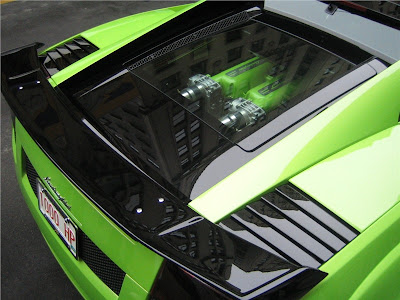

The latest Volkswagen GTI was introduced midway through the 2006 model year. The platform on which it's based is representative of the fifth-generation Golf, which has been renamed the Rabbit for the U.S. market. Highlighted improvements for this generation include a stiffer body structure, a fully independent suspension and new features such as xenon headlights and an available navigation system. The GTI is available in two-door and four-door hatchback body styles.
VW makes many modifications to the GTI to improve its performance and distinctiveness compared to other Rabbit models. For power, it has a turbocharged, 2.0-liter four-cylinder engine called the 2.0T that's capable of 200 hp. A six-speed manual transmission is standard and sends power to the front wheels. A sequentially shifting six-speed Direct Shift Gearbox (DSG) transmission is optional.
In Volkswagen GTI reviews, this hatchback has earned favorable commentary for its powerful and flexible engine, comfortable seating, upscale interior design and everyday versatility. Downsides include handling abilities that aren't quite as sharp as some competitors' and a price that elevates quickly when options are added.
Consumers interested in used GTI models will have plenty of choices. The current model arrived for 2006 as a two-door hatchback only, while the four-door arrived the following year. Minor equipment changes have occurred since then. Otherwise, most used-car lots will feature the fourth-generation GTI produced for the 1999-2006 model years. Buyers should be aware that VW frequently overlaps its generational models for the GTI -- for example, both the fourth- and fifth-gen GTIs were sold for the 2006 model year.
The fourth-generation VW GTI debuted in two trim levels -- GLS and GLX. The GLS has a 115-hp 2.0-liter engine and could be had with either a manual or automatic transmission. The GLX came with a 174-hp, 2.8-liter six-cylinder "VR6" and a manual transmission only. The following year, VW replaced the 2.0-liter engine in the GLS with a much more sporting 1.8-liter engine called the 1.8T. Turbocharged, this one produced 150 hp.
In general, this GTI was less sporting than other competing models of its time. This was especially true in terms of reflexes and handling, as the car had a relatively unsophisticated suspension and a somewhat hefty curb weight. It did counter with a high-quality interior and enhanced versatility, however.
For shoppers, GTIs for model years 2002 and newer would be preferable as they had more standard equipment and more power (180 hp for the 1.8T and 200 hp for the VR6). VW also offered a few special models for this generation -- the 2002 GTI 337, the similar 20th-anniversary 2003 GTI, and the rare GTI R32 that had all-wheel-drive and a 240-hp 3.2-liter V6.
The third-gen Volkswagen GTI was available from 1994-'99. For the most part, this model is not as desirable as other generations due to its selection of engines. Though again a two-door hatchback based on the Golf, it debuted with the uninspiring 2.0-liter engine only. Only in 1995 did the VR6 engine (172 hp) finally enter production alongside the 2.0-liter.








No comments:
Post a Comment